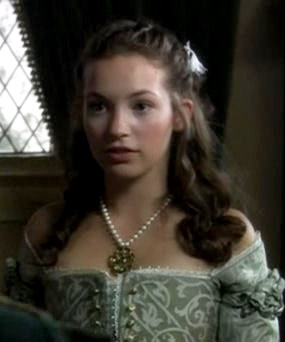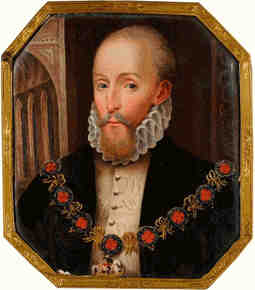Mary Boleyn
Revision as of 16:58, 13 November 2020 by Travis (talk | contribs) (Created page with "<div class="WPC-editableContent"><font size="-0"><font size="-0"><font size="-0"><font color="#ffffff"><b>Mary Boleyn, </b><font color="#808080">as played by Perdita Weeks...")
Mary Boleyn, as played by Perdita Weeks
UNFORGETTABLE CHARACTER QUOTES
DEFINING EPISODES | MEMORABLE SCENES
PHOTOS
VIDEOS
| | ||||
| born c. 1499 - died July 19, 1543 Character's backstory: famous for being the mistress of two kings, Francis I and Henry VIII. Older sister of Anne Boleyn (evidence from a letter written by Mary's grandson to Elizabeth I, claiming the Ormonde title on the basis of Mary being the elder sister; Elizabeth accepted the claim). When she was still a young girl, her father secured her a position as a maid of honor to Mary Tudor in 1514 when she was to journey to France to become the wife of Louis XII. Mary remained in Paris after the wedding and stayed at court until she was recalled in 1519. There were rumours at the time that the reason Mary's family recalled her home was due to her numerous scandalous affairs with various men at the French court, including Francis I and his courtiers. Mary was wed to Sir William Carey, a minor noble and third cousin of Henry VIII, in February of 1520 at Greenwich, a match arranged by their two families and attended by the king. On the 2nd March 1522, the Shrovetide joust had the theme of unrequited love and Henry VIII rode out on a horse decorated with a wounded heart and wearing the motto “elle mon coeur a navera”, meaning “she has wounded my heart”. Henry began an affair which probably lasted from about 1522 until she became pregnant with her second child in 1525. After (some say during) her affair with the king she gave birth to two children, Catherine and Henry, whom her husband William Carey claimed as his own. Mary was widowed in 1528 when her husband died of illness. She later remarried a commoner, Sir William Stafford. See below * Gentility: daughter of Sir Thomas Boleyn, Earl of Wiltshire, and Lady Elizabeth Howard, daughter of the 2nd Duke of Norfolk Position: maid of honor to Princess Mary Tudor, Lady in Waiting to Queen Katherine of Aragon Personality type: flirtatious, scandal seems to follow her where ever she goes. Mary was considered more conventionally beautiful than Anne but lacked her sister's style intellect, and wit. Rash and emotional. Signature look: appearance unknown, but likely attractive and fairer than her younger sister. Said to be the fair Boleyn with light complexion and golden hair, the opposite of her sister Anne. One portrait, a late copy of an early original, survives: hair colour is unknown, but she has large dark eyes. Endearing trait(s): probably married her second husband, Stafford, (1534) out of love despite her family disowning her as a result. Both Henry VIII and Anne Boleyn were outraged at her not following protocol; Henry VIII was offended at having an obscure member of the minor gentry as his brother-in-law. The Staffords spent the remainder of their live residing in the countryside. Mary had several children by Stafford. Upon Lady Rochford's (George Boleyn's wife) death in 1542, she inherited the entirety of the Boleyn fortune. Annoying trait(s):A certain brashness in flouting convention by having affairs & a lack of ambition. Nicknames: "The English Mare" - Francis I, King of France described her as "una grandissima ribalda, infame sopra tutti" ("a great prostitute, infamous above all") |
“As Mary followed her mistress to each of these exciting places, her beauty ensured that she would never be short of suitors sighing after her. It was a heady time which Mary, free of her father’s guiding influence for the first time, was determined to enjoy to the full.” ~ Josephine Wilkinson - about Mary's time in France as a maid of honour to Henry's sister Mary “the impression we gain from the scant sources on her is of a kind, loving woman who followed her heart” ~ Kelly Hart's Mistresses of Henry VIII “a placid, unremarkable girl” ~ David Starkey Click EasyEdit to update this page! (Don't see the EasyEdit button above? <a href="/#signin" target="_self">Sign in</a> or <a href="/accountnew" target="_self">Sign up</a>.)
| |||
CHARACTER CONNECTIONSFamily members: Father: Sir Thomas Boleyn Mother: Lady Elizabeth Howard (sister of Sir Thomas Howard, 3rd Duke of Norfolk) Brother: Sir George Boleyn Sister: Anne Boleyn Cousin : Madge Sheldon Cousin : Katherine Howard Romance(s): mistress to King Francis I and King Henry VIII wife to Sir William Carey (1520 - 1528 his death) wife to William Stafford (1534 - 1543 her death) - Stafford was a commoner with no rank and small income. A love match, as evidenced by the letter she wrote to Sir Thomas Cromwell (at right). Children: Daughter: Catherine Carey, Lady Knollys (b. c. 1524 - 1568) Son: Henry Carey, Baron Hunsdon (b. 1526 - 1596) (rumored to be the illegitimate children of King Henry VIII, others say that William Carey was the father) See : Controversies about Mary Boleyn Son: (with Stafford) Daughter: Anne Stafford Son: Edward Stafford (b. c. 1535 - c. 1545) (no records confirm the existence or survival of either), although she is recorded to have appeared in court, pregnant, after being secretly married. *Many famous historical figures claim Mary as an ancestor, including Charles Darwin, Winston Churchill, and Princess Diana. Friends: Anne Boleyn George Boleyn Although Anne and George Boleyn were very close and reportedly had little use for their sister, Mary. (This was reported by several foreign ambassadors.) Mark Smeaton Enemies: |
|
UNFORGETTABLE CHARACTER QUOTES
| |
DEFINING EPISODES | MEMORABLE SCENES
|
PHOTOS
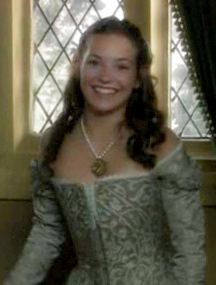 | 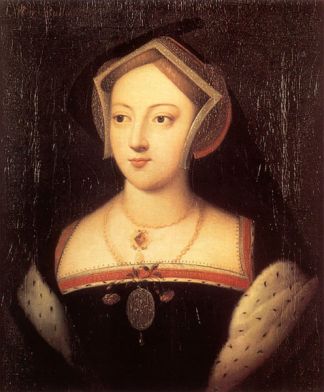 Later copy of an original at Hever Castle |
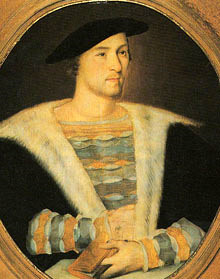 Mary's 1st husband Sir William Carey A favourite and cousin of King Henry who served him as a Gentleman of the Privy Chamber and Esquire of the Body. Married Mary on 4th February1520 and died of the sweating sickness on 22nd June 1528 aged 28. He died greatly in debt, and his wife was reduced to pawning her jewellery before her sister Anne Boleyn arranged a pension for her. | 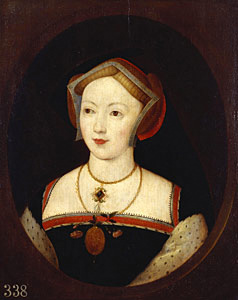 This portrait hangs in Holyrood Palace, Edinburgh Scotland. The inclusion of this picture in an oval inner frame makes it possible that the original was painted as a pendant to the similar portrait of her husband, Henry Carey, at left. |
| Henry Carey, 1st Baron of Hunsdon Mary Boleyn's eldest son. He enjoyed substantial favour from Queen Elizabeth I | 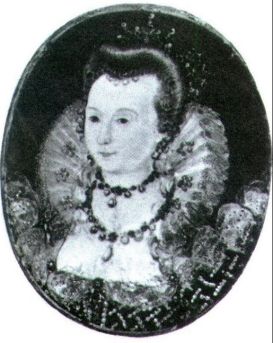 Catherine Carey, Lady Knollys Mary's daughter who was Elizabeth I's chief lady in waiting |
VIDEOS
<embed allowfullscreen="true" height="350" src="http://widget.wetpaintserv.us/wiki/thetudorswiki/widget/youtubevideo/0b1d3677f5e3765d3b0322fdc8930e9426e71ebe" type="application/x-shockwave-flash" width="425" wmode="transparent"/> |
